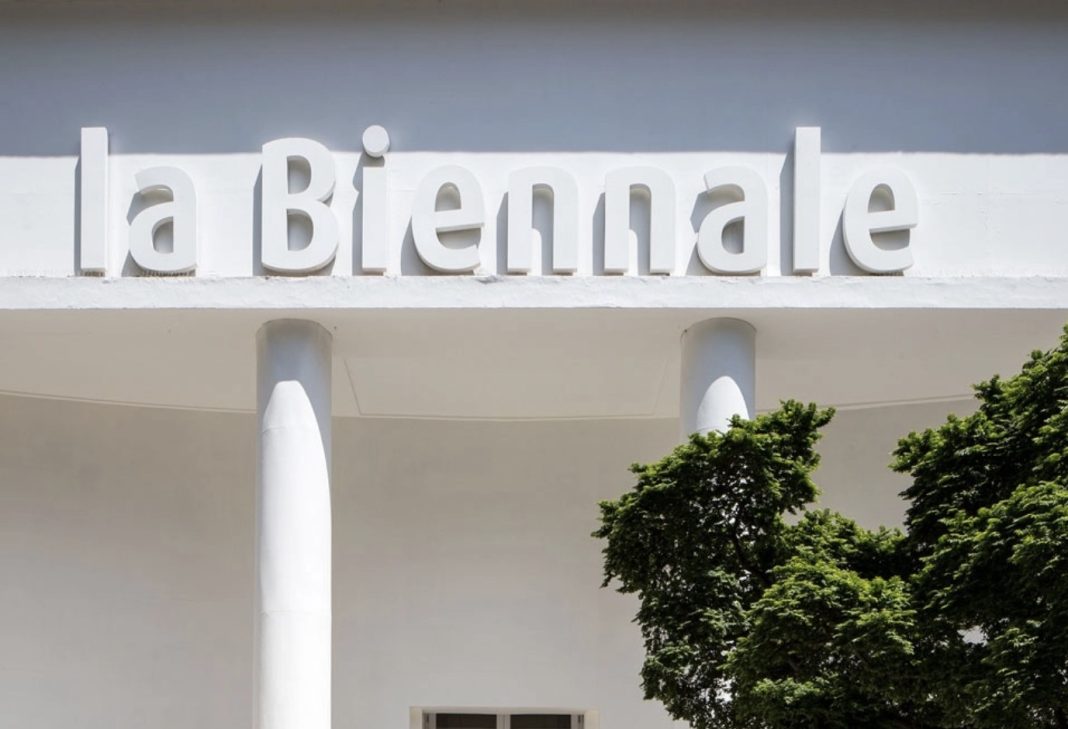By Janet Ekstract
VENICE (GOLDENHORN AGENCY)- One of the major highlights at the 59th Venice Biennale and a definite must-see is the Ukrainian pavilion whose curators Maria Lanko, Lizaveta German, Borys Filonenko and artist Pavlo Markov were determined to exhibit at the biennale. Lanko told the press that she knew she had to get the art installation to Venice one way or the other. The miraculous trip through four countries to transport the art in time to show at the biennale, adds to the unique perspective of this fascinating art project created by the famous Ukrainian artist Pavlo Makov entitled The Fountain of Exhaustion (Acqua Alta).
Maria Lanko recently shared her story with the press in New York City at Jim Kempner Fine Art Gallery owned by Ukrainian-American Jim Kempner. On the day Russia invaded Ukraine, Lanko loaded up her car with most of Makov’s installation but had to leave behind the giant base since it wouldn’t fit. It took Lanko six days driving first through Romania then Hungary and Austria before arriving in Italy.
She told the press that it’s crucial, particularly during this time, to exhibit Ukrainian art to debunk the myth in the West that it’s just a subgroup of Russian art. As Lanko commented: “Nobody can tell the difference between these two countries and our cultures, but they’re not just different, I believe they’re quite the opposite.” Makov’s work was reconstructed on site in Venice and is comprised of 78 funnels mounted in a triangle where water flows out of the top of the funnel after being split into 77 other funnels to symbolize “the exhaustion on a personal and global level,” Lanko explained. She said that each funnel has one “mouth” and two “spouts” so the water in it, splits in half. Then the incoming stream of water from the top goes down the fountain gradually exhausting itself closer to the bottom. She said this artwork was conceived by Makov in 1995 in Kharkiv, inspired by the city’s landscapes and its rivers that were drying up and by Kharkiv’s deteriorated infrastructure with continual disruptions in water supply, neglected public spaces and water fountains that were not working.
Lanko’s trip to New York City had a dual purpose she said. Not just to talk about the importance of Ukrainian art but to raise funds for the Ukrainian Emergency Art Fund that was created to deal with the fallout from the Russian invasion that affects the Ukrainian art community and the threats the war poses for this community. Lanko and her co-founders established the fund, she said, “to ensure the continuity and development of the Ukrainian cultural process during the war.” Lanko added that with the support of 200 artists and others in the arena of culture and arts that she was able to raise over $52,000 on her trip to New York.
The Ukrainian Emergency Art Fund was founded through the Museum of Contemporary Art NGO (MOCA) in partnership with Zaborona, an independent media group reporting trends and culture in post-socialist countries of Eastern Europe that provides in-depth reporting of current affairs along with The Naked Room, a contemporary art gallery in Kyiv that Lanko co-founded and curates, and Mystetskiyi Arsenal, The National Museum Art and Culture Complex in Ukraine that was founded in 2003 and converted from a military facility into a museum.
The Ukrainian Emergency Art Fund provides one-time financial aid or stipends for up to three months for cultural workers and currently, there is only a limited number of stipends available. MOCA administers the fund and its philosophy is that cultural workers have “a right to be safe and continue their work.” The fund’s mission includes making “free, strong and alive voices” from those in Ukraine’s culture and art world heard, and to expand and develop the “Ukrainian cultural process during the war.”
Lanko expressed in a recent media interview that she’s hopeful about Ukraine despite the war. As she said: “But looking at how Ukraine is reinventing itself in real time, in the face of war, I truly believe that we’ll be able to break this logic of being unrealized and unrepresented. The Pavilion simply must keep up with the country’s subjectivity and presence. We are very much determined to do that.”




